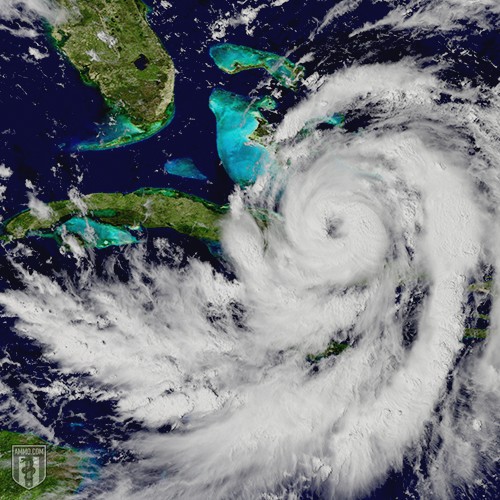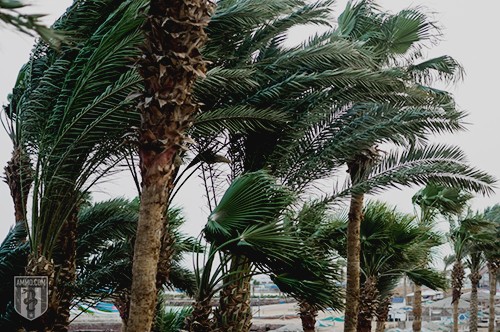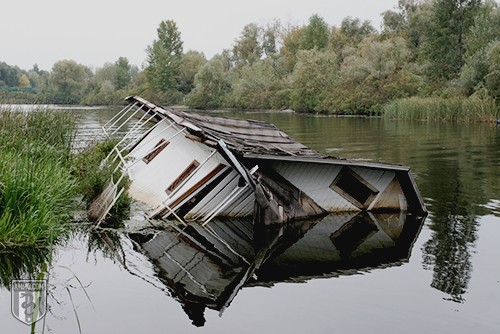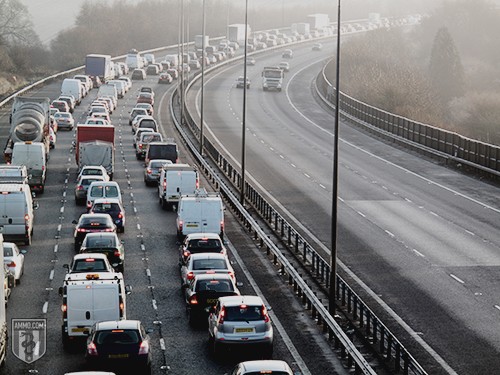Post by hunter on Sept 6, 2019 22:03:52 GMT
Hurricane Preparation Guide: How To Plan for a Tropical Disaster

While living along the American coast gives you access to beautiful water and beaches, it also puts you at risk for some of the world’s most dangerous storms – hurricanes. And if you live in one of these ocean towns or cities, you must be prepared for them. These massive ocean storm systems cause flooding, storm surges, and high winds, and can even spawn tornadoes. They’re destructive forces and if proper precautions are not taken, they can be deadly.
What Is a Hurricane?
Hurricanes are powerful storms that start at sea. They occur in both the Pacific and Atlantic Oceans, but tend to hit coastal lands more in the east. Every hurricane starts as a tropical storm and grows in size and strength. If and when the storm’s sustained winds reach 74 mph or more, the storm is classified as a hurricane. Once a storm has reached this level, it is named and categorized one through five using the Saffir-Simpson Hurricane Wind Scale.
Category One: Sustained winds of 74-95 mph
Category Two: Sustained winds of 96-110 mph
Category Three: Sustained winds of 111-129 mph
Category Four: Sustained winds of 130-156 mph
Category Five: Sustained winds of 157 mph or higher
These massive storms can grow up to 600 miles across and take over a week to subside, as they only move 10 to 20 mph. Even category one hurricanes cause severe destruction, damaging roofs, snapping power lines, and toppling trees. And when the strongest storms hit, the damage is catastrophic. Homes are destroyed. Almost all trees are fallen. Those who don’t evacuate are often left completely isolated with no way in or out. It can take months for these areas to become livable again, and some never do.
Hurricanes are powerful storms that start at sea. They occur in both the Pacific and Atlantic Oceans, but tend to hit coastal lands more in the east. Every hurricane starts as a tropical storm and grows in size and strength. If and when the storm’s sustained winds reach 74 mph or more, the storm is classified as a hurricane. Once a storm has reached this level, it is named and categorized one through five using the Saffir-Simpson Hurricane Wind Scale.
Category One: Sustained winds of 74-95 mph
Category Two: Sustained winds of 96-110 mph
Category Three: Sustained winds of 111-129 mph
Category Four: Sustained winds of 130-156 mph
Category Five: Sustained winds of 157 mph or higher
These massive storms can grow up to 600 miles across and take over a week to subside, as they only move 10 to 20 mph. Even category one hurricanes cause severe destruction, damaging roofs, snapping power lines, and toppling trees. And when the strongest storms hit, the damage is catastrophic. Homes are destroyed. Almost all trees are fallen. Those who don’t evacuate are often left completely isolated with no way in or out. It can take months for these areas to become livable again, and some never do.

How to Prepare for a Hurricane
How To Plan for a Tropical Disaster When preparing for a hurricane, it’s important to start well before there’s a storm in sight. And the first step in preparing for any type of disaster is to have a plan. Your hurricane preparedness plan should include when and how to get to safety, a checklist for what needs to be done before you leave, and phone numbers for out of town contacts. You should create two plans, one for if you evacuate and one for staying home during the storm.
Once you have your hurricane disaster plan, here’s how you prepare for a hurricane:
How To Plan for a Tropical Disaster When preparing for a hurricane, it’s important to start well before there’s a storm in sight. And the first step in preparing for any type of disaster is to have a plan. Your hurricane preparedness plan should include when and how to get to safety, a checklist for what needs to be done before you leave, and phone numbers for out of town contacts. You should create two plans, one for if you evacuate and one for staying home during the storm.
Once you have your hurricane disaster plan, here’s how you prepare for a hurricane:
Have a Disaster Supply Kit
A hurricane disaster preparedness kit provides you with the necessary things you need in case of an emergency. Be sure to have at least three to five days worth of supplies, as it can take days after a hurricane before flooding resides and emergency personnel are able to get streets open and safe.
Here’s what your kit needs to include:
One gallon of water per person, per day
1,200 calories of nonperishable food per person, per day
Flashlights and batteries
Battery or crank-style radio, preferably a NOAA Weather Radio
Blankets
Manual can opener
Seven days worth of all medication
First aid supplies
Hygiene products
Good, sturdy shoes for each family member
Money, preferably in small bills
A spare credit card
Something for entertainment, such as a deck of cards or puzzle book
Important documents in a waterproof container; include copies of driver’s licenses, identification cards, birth certificates, social security cards, and insurance information
If you have pets, be sure to take their needs into consideration, including food, water, and any medical supplies
If you have a small child, someone with a disability, or an elderly individual living with you, include items for their specific needs
Prepare Your Home
If you live in an area that’s at risk for hurricanes, it’s important to prepare your home for tropical storms before the season hits.
Here’s what should be done:
Remove all dead, dying, or dangerously hanging limbs from nearby trees
Check gutters to ensure they’re secure and free from clogs and debris
Retrofit to secure and reinforce the roof, windows, and doors on your home, garage, and other outbuildings with a minimum of ⅝ inch exterior or marine plywood
Keep a functioning generator and start it every three months to ensure it’s working properly
Design and build a safe room in the interior of your home
Know Your Risk
Certain areas are more at risk for hurricanes than others. That’s because tropical storms and hurricanes need water temperatures of at least 79 degrees Fahrenheit to form, which is why they tend to occur during specific seasons. For the Pacific coast, hurricane season runs from May 15th through December 30th, while the season starts on June 1st for the Atlantic coast and ends on December 30th – peaking from mid-August through October. Although most hurricanes happen during this time period, it should be mentioned that hurricanes occasionally can and do occur outside this window.
It’s also important to understand the specific risk at any given time. The National Ocean Service uses a watch and warning alert system to notify people and communities of the current risk.
Here’s what each of these classifications signify:
Hurricane Watch: A hurricane is possible within the next 48 hours
Hurricane Warning: A hurricane is expected within the next 36 hours
If you live in a hurricane-prone area, you should contact your local emergency management office or the American Red Cross to get information on the community’s hurricane plan. This will inform you of evacuation routes, shelters, and the area’s communication system.
A hurricane disaster preparedness kit provides you with the necessary things you need in case of an emergency. Be sure to have at least three to five days worth of supplies, as it can take days after a hurricane before flooding resides and emergency personnel are able to get streets open and safe.
Here’s what your kit needs to include:
One gallon of water per person, per day
1,200 calories of nonperishable food per person, per day
Flashlights and batteries
Battery or crank-style radio, preferably a NOAA Weather Radio
Blankets
Manual can opener
Seven days worth of all medication
First aid supplies
Hygiene products
Good, sturdy shoes for each family member
Money, preferably in small bills
A spare credit card
Something for entertainment, such as a deck of cards or puzzle book
Important documents in a waterproof container; include copies of driver’s licenses, identification cards, birth certificates, social security cards, and insurance information
If you have pets, be sure to take their needs into consideration, including food, water, and any medical supplies
If you have a small child, someone with a disability, or an elderly individual living with you, include items for their specific needs
Prepare Your Home
If you live in an area that’s at risk for hurricanes, it’s important to prepare your home for tropical storms before the season hits.
Here’s what should be done:
Remove all dead, dying, or dangerously hanging limbs from nearby trees
Check gutters to ensure they’re secure and free from clogs and debris
Retrofit to secure and reinforce the roof, windows, and doors on your home, garage, and other outbuildings with a minimum of ⅝ inch exterior or marine plywood
Keep a functioning generator and start it every three months to ensure it’s working properly
Design and build a safe room in the interior of your home
Know Your Risk
Certain areas are more at risk for hurricanes than others. That’s because tropical storms and hurricanes need water temperatures of at least 79 degrees Fahrenheit to form, which is why they tend to occur during specific seasons. For the Pacific coast, hurricane season runs from May 15th through December 30th, while the season starts on June 1st for the Atlantic coast and ends on December 30th – peaking from mid-August through October. Although most hurricanes happen during this time period, it should be mentioned that hurricanes occasionally can and do occur outside this window.
It’s also important to understand the specific risk at any given time. The National Ocean Service uses a watch and warning alert system to notify people and communities of the current risk.
Here’s what each of these classifications signify:
Hurricane Watch: A hurricane is possible within the next 48 hours
Hurricane Warning: A hurricane is expected within the next 36 hours
If you live in a hurricane-prone area, you should contact your local emergency management office or the American Red Cross to get information on the community’s hurricane plan. This will inform you of evacuation routes, shelters, and the area’s communication system.

Purchase Flood Insurance
How To Plan for a Tropical Disaster When a hurricane hits land, it’s accompanied by heavy rains and storm surges, sending flood and ocean waters into homes and businesses. Yet homeowner insurance policies do not cover flood damage, even if it was caused by a hurricane. If you’re located in an area that is at risk for hurricanes, invest in flood insurance.
Know the Evacuations Processes and Routes
Areas prone to hurricanes have predetermined hurricane evacuation routes – you should know them and drive them. You should also have at least one, preferably two, alternative evacuation routes that will take you at least 20 to 50 miles inland.
Your hurricane emergency preparedness plan should also include where you will go when you evacuate. Will you go to an emergency shelter? Where is it? Will you go to your sister’s? A hotel? Have those decisions made and make sure everyone in your family is aware of the plan. And just like with the evacuation route, you should have at least one alternate destination, just in case you can’t make it to your first one.
Become aware of your community’s hurricane and evacuation procedures. Many cities and towns have an email or text alert system, which will automatically notify you of hurricane warnings and evacuation orders.
How To Plan for a Tropical Disaster When a hurricane hits land, it’s accompanied by heavy rains and storm surges, sending flood and ocean waters into homes and businesses. Yet homeowner insurance policies do not cover flood damage, even if it was caused by a hurricane. If you’re located in an area that is at risk for hurricanes, invest in flood insurance.
Know the Evacuations Processes and Routes
Areas prone to hurricanes have predetermined hurricane evacuation routes – you should know them and drive them. You should also have at least one, preferably two, alternative evacuation routes that will take you at least 20 to 50 miles inland.
Your hurricane emergency preparedness plan should also include where you will go when you evacuate. Will you go to an emergency shelter? Where is it? Will you go to your sister’s? A hotel? Have those decisions made and make sure everyone in your family is aware of the plan. And just like with the evacuation route, you should have at least one alternate destination, just in case you can’t make it to your first one.
Become aware of your community’s hurricane and evacuation procedures. Many cities and towns have an email or text alert system, which will automatically notify you of hurricane warnings and evacuation orders.
Family Communication Plan
When a hurricane hits, things can happen quickly and you may end up separated from family. That’s why you need a family communication plan. This plan appoints an out-of-state friend or relative as the primary contact person, and determines that everyone call that person at a specific increment of time. That way if the family gets separated, they still know everyone is safe.
During a Hurricane
While preparation is mandatory for safety during a hurricane, you still need to know what to do during a hurricane to stay safe.
Evacuation
When a hurricane hits, things can happen quickly and you may end up separated from family. That’s why you need a family communication plan. This plan appoints an out-of-state friend or relative as the primary contact person, and determines that everyone call that person at a specific increment of time. That way if the family gets separated, they still know everyone is safe.
During a Hurricane
While preparation is mandatory for safety during a hurricane, you still need to know what to do during a hurricane to stay safe.
Evacuation

How To Plan for a Tropical Disaster
If an evacuation is ordered, evacuate. These orders are based on science-based predictions, and they are not given lightly. That’s why you should never, for any reason, ignore an evacuation order. When you do, you significantly increase your risk of injury and death, as the most common reason fatalities and injuries occur during a hurricane is because of an ignored evacuation order.
Here’s what to keep in mind when you’re evacuating:
Keep a full tank of gas in your vehicle; if there are power outages, gas may be hard to come by
Know your route, but have at least two alternatives in case of downed trees, flooded roads, or traffic jams
Also have an alternative destination just in case, for whatever reason, you can’t make it to the first
Leave as soon as possible after the order is issued
Take your emergency supply kit with you
Watch out for road hazards
If you have pets, be sure to bring them with you; if you’re headed to a shelter, contact a kennel, as emergency shelters do not allow any type of pets, regardless of what they are
Leave a note on your kitchen table with the date, the fact that you’re evacuating, where your destination is, and a phone number where you can be reached
If you have elderly or disabled neighbors, check to see if they need help with their own evacuation
Secure your home by closing your shutters and unplugging all the appliances that you can
48 Hours Before the Storm
Check your emergency preparedness kit and restock or replace needed items
If you have children, pets, a family member with a disability, or an elderly individual with you, be sure you have the necessary items to meet their specific needs
Make sure your vehicle has a full gas tank and is in good running condition
36 Hours Before the Storm
Tune in to local radio and television channels for evacuation orders
Check in with family and inform them of your plans
24 Hours Before the Storm
Keep your cell phone charged
Bring moveable outdoor items inside
Secure large outside items by anchoring to the ground or a permanent structure
Shut storm shutters or cover windows with boards
Reinforce what you can to protect it against the wind
Elevate what you can to save it from flood damage
6 Hours Before the Storm
Stay where you are; travel becomes dangerous as the storm approaches
Close all shutters if you haven’t already
Set refrigerator and freezer to the coldest possible setting, opening them only when absolutely necessary; this can help preserve your food if the power goes out
Fill bathtubs and sinks with fresh water; this gives you access to clean water, but also stops the backflow of flood waters
Check in with a local TV, radio, or website every 30 minutes to get regular updates on the storm’s progress
During the Storm
Stay where you are
Stay in interior rooms away from windows, glass doors, and skylights
Listen to local weather to know the progress of the storm
If power goes out, unplug all appliances to prevent power surges when it turns on
Move to the upper levels of the home if flooding occurs, but not into a closed attic
Understand that just because there’s a lull in the storm, it may not be over; the weather in the eye of a hurricane is often calm
After the Storm
If you evacuated, wait until local authorities say it’s okay to return home
Watch for debris and downed power lines
Don’t drive or walk through flood waters
Contact your homeowners insurance company as soon as possible
Take pictures of the damage that’s occurred
Check your home’s foundation thoroughly, as storm surges and flooding can damage the foundation and erode the land around it
Do whatever temporary fixes you can, such as tarping the roof or boarding up broken windows
Avoid flood water; it’s often contaminated with oil, gasoline, and sewage
Check all food, stored water, and medications for flood damage to ensure safety
Before a hurricane hits, take the time to prepare. These are huge, dangerous storms that wreak havoc on America’s coastlines and destroy homes that aren’t properly protected. Instead, make a plan, build an emergency preparedness kit, and evacuate when told to. That way, you protect your home and your family, even when a hurricane hits.
Here’s what to keep in mind when you’re evacuating:
Keep a full tank of gas in your vehicle; if there are power outages, gas may be hard to come by
Know your route, but have at least two alternatives in case of downed trees, flooded roads, or traffic jams
Also have an alternative destination just in case, for whatever reason, you can’t make it to the first
Leave as soon as possible after the order is issued
Take your emergency supply kit with you
Watch out for road hazards
If you have pets, be sure to bring them with you; if you’re headed to a shelter, contact a kennel, as emergency shelters do not allow any type of pets, regardless of what they are
Leave a note on your kitchen table with the date, the fact that you’re evacuating, where your destination is, and a phone number where you can be reached
If you have elderly or disabled neighbors, check to see if they need help with their own evacuation
Secure your home by closing your shutters and unplugging all the appliances that you can
48 Hours Before the Storm
Check your emergency preparedness kit and restock or replace needed items
If you have children, pets, a family member with a disability, or an elderly individual with you, be sure you have the necessary items to meet their specific needs
Make sure your vehicle has a full gas tank and is in good running condition
36 Hours Before the Storm
Tune in to local radio and television channels for evacuation orders
Check in with family and inform them of your plans
24 Hours Before the Storm
Keep your cell phone charged
Bring moveable outdoor items inside
Secure large outside items by anchoring to the ground or a permanent structure
Shut storm shutters or cover windows with boards
Reinforce what you can to protect it against the wind
Elevate what you can to save it from flood damage
6 Hours Before the Storm
Stay where you are; travel becomes dangerous as the storm approaches
Close all shutters if you haven’t already
Set refrigerator and freezer to the coldest possible setting, opening them only when absolutely necessary; this can help preserve your food if the power goes out
Fill bathtubs and sinks with fresh water; this gives you access to clean water, but also stops the backflow of flood waters
Check in with a local TV, radio, or website every 30 minutes to get regular updates on the storm’s progress
During the Storm
Stay where you are
Stay in interior rooms away from windows, glass doors, and skylights
Listen to local weather to know the progress of the storm
If power goes out, unplug all appliances to prevent power surges when it turns on
Move to the upper levels of the home if flooding occurs, but not into a closed attic
Understand that just because there’s a lull in the storm, it may not be over; the weather in the eye of a hurricane is often calm
After the Storm
If you evacuated, wait until local authorities say it’s okay to return home
Watch for debris and downed power lines
Don’t drive or walk through flood waters
Contact your homeowners insurance company as soon as possible
Take pictures of the damage that’s occurred
Check your home’s foundation thoroughly, as storm surges and flooding can damage the foundation and erode the land around it
Do whatever temporary fixes you can, such as tarping the roof or boarding up broken windows
Avoid flood water; it’s often contaminated with oil, gasoline, and sewage
Check all food, stored water, and medications for flood damage to ensure safety
Before a hurricane hits, take the time to prepare. These are huge, dangerous storms that wreak havoc on America’s coastlines and destroy homes that aren’t properly protected. Instead, make a plan, build an emergency preparedness kit, and evacuate when told to. That way, you protect your home and your family, even when a hurricane hits.











